The dream soul of the sleeping Hau Maka in Hiva looked for
Rangi Meamea as a marker for where the King should live:
... The dream soul spoke the following: 'There it
is - ho! - the place - ho! - for the king - ho! - to live (there
in the future), for this is (indeed) Rangi Meamea.'
Probably it meant the place where the Sun and
Sirius together had reached Alkes in JUNE 30:
... The Sothic cycle was based on what is
referred to in technical jargon as 'the periodic return of the
heliacal rising of Sirius', which is the first appearance of
this star after a seasonal absence, rising at dawn just ahead of
the sun in the eastern portion of the sky. In the case of Sirius
the interval between one such rising and the next amounts to
exactly 365.25 days - a mathematically harmonious figure,
uncomplicated by further decimal points, which is just twelve
minutes longer than the duration of the solar year ...
|
JUNE 28 |
29 (180) |
SIRIUS |
JULY 1
(*102) |
 |
 |
 |
 |
|
Ga4-16 |
Ga4-17 (100) |
Ga4-18 |
Ga4-19 |
|
ν Hydrae (163.1) |
no star listed (164)
ALTAIR (α
Aquilae) |
Wings-27 (Snake)
η
Octans (165.4),
ALKES
(Shallow Basin) =
α
Crateris
(165.6)
*124.0 = *165.4 - *41.4 |
ANA-TIPU-4 (Upper-side-pillar - where the guards stood)
MERAK
(Loin, not Lion) =
β
Ursae Majoris
(166.2),
DUBHE
(Bear) =
α
Ursae Majoris
(166.7) |

The Chinese Emperor was drawing his bow at Sirius but he did not
use an
arrow ('teka'). His expectant servant in front of him -
probably a female we can see from her 'crocodile' girdle -
seems to be waiting for the resulting rain drops. It was the
place in the sky named after a dry
shallow basin (Al Kes). |
|
Aug 31 |
Sept 1 |
2 (*165) |
3 (246) |
|
°Aug 27 |
28 |
29 (*161 → °June 10) |
30 (242) |
|
'Aug 4 (216) |
5 (*137) |
6 |
7 |
|
"July 21 |
22 / 7 → π |
Te Anakena 23 (204) |
24 (*125) |
|
... They remained in Hanga Hoonu
for five days. On the twenty-third day of the month of
July ('Anakena'), they reached Rangi Meamea ...
[E:25-26] |
101 (Ga4-18) - 5 = 96 (JUNE 25). The Explorers spent
5 days in Hanga Hoonu before they reached
Rangi Meamea:
|
ST
JOHN'S DAY |
JUNE 25 (181 - 5) |
26
(177) |
27 |
 |
 |
 |
 |
 |
|
Ga4-12 (175 = 350 / 2) |
Ga4-13 → 14 * 29½ |
Ga4-14 → Bharani |
Ga4-15 → 4 * 15 = 60 |
|
p Carinae (159.3) |
φ Hydrae
(160.3) |
no
star listed (161) |
VATHORZ POSTERIOR = θ Carinae
(162.1),
PEREGRINI = μ Velorum,
η Carinae
(162.6) |
|
... This [η
Carinae] is one of the most noted objects in the
heavens, perhaps even so in almost prehistoric
times, for Babylonian inscriptions seem to refer
to a star noticeable from occasional faintness
in its light, that Jensen thinks was η.
And he claims it as one of the temple stars
associated with Ea, or Ia, of Eridhu¹, the Lord
of Waters, otherwise known as Oannes², the
mysterious human fish and greatest god of the
kingdom.
¹ Eridhu, or Eri-duga, the
Holy City, Nunki, or Nunpe, one of the oldest
cities in the world, even in ancient Babylonia,
was that kingdom's flourishing port on the
Persian Gulf, but, by the encroachment of the
delta, its site is now one hundred miles inland.
In its vicinity the Babylonians located their
sacred Tree of Life.
² Berōssōs described Oannes
as the teacher of early man in all knowledge;
and in mythology he was even the creator of man
and the father of Tammuz and Ishtar, themselves
associated with other stars and sky figures.
Jensen thinks Oannes connected with the stars of
Capricorn; Lockyer finds his counterpart in the
god Chnemu of Southern Egypt; and some have
regarded him as the prototype of Noah ...
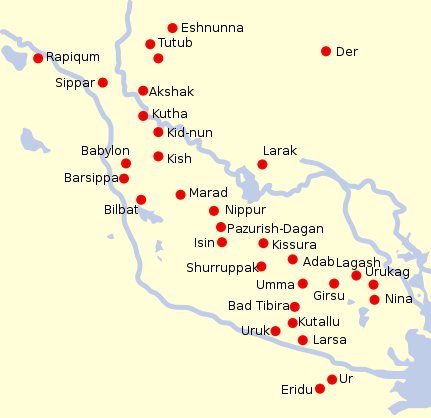 |
|
Aug
27 |
28
(240) |
29
(*161) |
30 |
|
°Aug
23 |
24
(236 = 8 * 29½) |
25 (*157) |
26 |
|
'July 31 |
'Aug
1 |
2
(214) |
3
(*500) |
|
"July 17 |
Te Anakena 18 |
19
(200) |
20
(*121) |
|
... They went on and came to
Tama. They looked around and said, 'This is
Tama.' They gave the name 'Tama, an evil fish (he
ika kino), a very long nose (He
ihu roroa).' Again they went on and came to
One Tea. They saw it, looked around, and gave
the name 'One Tea A Hau Maka'. Then they went on
and came to Hanga Takaure. There they gave the
name 'Hanga Takaure A Hau Maka'. They made camp
and rested at the Bay of Flies for a week (etahi
pohitu). On the eighteenth day of the month
of July ('Anakena'), they went on from Hanga
Takaure. [E:23] |
|
NAKSHATRA DATES: |
|
CHRISTMAS EVE |
DEC 25 |
26
(360) |
27 |
|
η Aquarii (342.1), σ Gruis (342.4),
SITULA
(Water-jar) = κ Aquarii
(342.7)
*301.0 = *342.4 - *41.4 |
ε Piscis Austrini (343.5), ο Pegasi, β Gruis
(343.8) |
ρ Gruis (344.0),
MATAR
(Rain) = η Pegasi
(344.2), η Gruis (344.6), β Oct. (344.7) |
λ Pegasi (345.0), ξ Pegasi (345.1), ε Gruis
(345.3), τ Aquarii (345.7), ξ Oct. (345.8), μ
Pegasi (345.9) |
|
Febr
26 |
27
(58 = 2 * 29) |
28
(424) |
March 1 (*345) |
|
°Febr 22 |
23 |
24
(55) |
25 |
|
'Jan
30 (*315) |
31 |
'Febr 1 (32) |
2 |
|
"Jan
16 (*301) |
17 |
18 (383) |
19 |
Ga4-13 (→ 413 → 14 * 29½) is glyph number 96 (→ E:96). The
resemblance with Gb2-6 (32) is obvious - it probably should
be read as an 'empty' place - i.e. there seems to have been a pair of 'voids' (with
only whispering spirits present)165 right ascension days apart:
|
 |
164 |
 |
|
Ga4-13 (96) |
Gb2-6
(32) |
|
φ Hydrae
→ dry |
36
Capricorni → wet |
By adding 5 days (Hanga Hoonu) to 96 (Ga4-13) the
resulting glyph
number will indicate right ascension day *101 at the
time of the Bull. Similarly, by adding 5 days to Gb2-6
we will arrive at a glyph with a design which could be alluding to
Sirius (Te Pou, the Pillar):
|
CLOSE TO
THE SUN: |
|
DEC 7 |
8 |
9 |
10 |
11 (345) |
12 (*266) |
 |
 |
 |
 |
 |
 |
|
Gb2-6 (32) |
Gb2-7 |
Gb2-8 |
Gb2-9 |
Gb2-10 (82 + 183) |
Gb2-11 (266) |
|
BUNDA (Foundation)
/ KAKKAB
NAMMAΧ (Star of Mighty Destiny) |
θ Piscis Austrini (330.1), λ Octantis (330.7) |
|
Al Sa'd al Su'ud-22 (Luckiest of the Lucky)
/
Emptiness-11 (Rat)
TSIN =
36 Capricorni
(325.2),
ALPHIRK (The Flock) = β Cephei
(325.7),
SADALSUD
=
β
Aquarii,
ξ
Gruis (325.9) |
no star listed (326) |
CASTRA
= ε Capricorni
(327.2),
BUNDA
= ξ Aquarii
(327.5)
SIRIUS (α Canis Majoris)
|
Mahar sha hi-na Shahū-26 (Western One in the
Tail of the Goat)
NASHIRA
=
γ
Capricorni
(328.0),
ν
Oct. (328.3), AZELFAFAGE
= π¹ Cygni,
κ
Capricorni (328.7 |
Arkat sha hi-na Shahū-27 (Eastern One in the
Tail of the Goat)
ENIF
(The Nose) = ε Pegasi, ERAKIS = μ Cephei
(329.2),
46 CAPRICORNI,
JIH
(the Sun) =
κ
Pegasi
(329.3),
ι
Piscis Austrini (329.4),
λ
Capricorni (329.6),
ν
Cephei (329.7),
DENEB ALGIEDI
=
δ
Capricorni
(329.8)
*288.0 = *329.4 - *41.4 |

... In
China, with Capricornus, Pisces, and a part
of Sagittarius, it [Aquarius] constituted
the early Serpent, or Turtle, Tien Yuen;
and later was known as Hiuen Ying,
the Dark Warrior and Hero, or Darkly
Flourishing One, the Hiuen Wu, or
Hiuen Heaou, of the Han dynasty, which
Dupuis gave as Hiven Mao. It was a
symbol of the emperor Tchoun Hin, in
whose reign was a great deluge; but after
the Jesuits came in it became Paou Ping,
the Precious Vase. It contained three of the
sieu, and headed the list of zodiac signs as
the Rat, which in the far East was
the ideograph for 'water', and still so
remains in the almanacs of Central Asia,
Cochin China, and Japan ... |
|
Febr 9
(40) |
10 |
11 |
12 (408) |
13 (*329) |
All
Hearts' Day |
|
°Febr 5 (36) |
6 |
7 |
8 (*324) |
9 |
10 (41) |
|
'Jan 13 (378) |
14 |
15 (*300) |
16 |
17 |
18 (383) |
|
"Dec 30 (364) |
Ko Koró
(→ kórē) 31 |
"Jan 1 |
2 |
3 |
4 |
|
... On February 9 the Chorti Ah K'in,
'diviners', begin the agricultural year.
Both the 260-day cycle and the solar year
are used in setting dates for religious and
agricultural ceremonies, especially when
those rituals fall at the same time in both
calendars. The ceremony begins when the
diviners go to a sacred spring where they
choose five stones with the proper shape and
color. These stones will mark the five
positions of the sacred cosmogram created by
the ritual. When the stones are brought back
to the ceremonial house, two diviners start
the ritual by placing the stones on a table
in a careful pattern that reproduces the
schematic of the universe. At the same time,
helpers under the table replace last year's
diagram with the new one. They believe that
by placing the cosmic diagram under the base
of God at the center of the world they
demonstrate that God dominates the universe.
The priests place the stones in a very
particular order. First the stone that
corresponds to the sun in the eastern,
sunrise position of summer solstice is set
down; then the stone corresponding to the
western, sunset position of the same
solstice. This is followed by stones
representing the western, sunset position of
the winter solstice, then its eastern,
sunrise position. Together these four stones
form a square. They sit at the four corners
of the square just as we saw in the Creation
story from the Classic period and in the
Popol Vuh. Finally, the center stone is
placed to form the ancient five-point sign
modern researchers called the quincunx ...


... In
the inscriptions of Dendera, published by
Dümichen, the goddess Hathor is
called 'lady of every joy'. For once,
Dümichen adds: Literally ... 'the lady of
every heart circuit'. This is not to say
that the Egyptians had discovered the
circulation of the blood. But the
determinative sign for 'heart' often figures
as the plumb bob at the end of a plumb line
coming from a well-known astronomical or
surveying device, the merkhet.
Evidently, 'heart' is something very
specific, as it were the 'center of gravity'
...
See Aeg.Wb. 2, pp.
55f. for sign of the heart (ib) as
expressing generally 'the middle, the
center'.
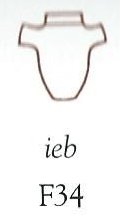
And this
may lead in quite another direction. The
Arabs preserved a name for Canopus - besides
calling the star Kalb at-tai-man
('heart of the south') ... Suhail el-wezn,
'Canopus Ponderosus', the heavy-weighing
Canopus, a name promptly declared
meaningless by the experts, but which could
well have belonged to an archaic system in
which Canopus was the weight at the end
of the plumb line, as
befitted its important position as a heavy
star at the South Pole of the 'waters
below'. Here is a chain of inferences which
might or might not be valid, but it is
allowable to test it, and no inference at
all would come from the 'lady of every joy'.
The line seems to state that Hathor
(= Hat Hor, 'House of Horus')
'rules' the revolution of a specific
celestial body - whether or not Canopus is
alluded to - or, if we can trust the
translation 'every', the revolution of all
celestial bodies. As concerns the identity
of the ruling lady, the greater possibility
speaks for Sirius, but Venus cannot be
excluded; in Mexico, too, Venus is called
'heart of the earth'. The reader is invited
to imagine for himself what many thousands
of such pseudo-primitive or poetic
interpretations must lead to: a disfigured
interpretation of Egyptian intellectual life
... |
|
CLOSE TO
THE FULL MOON: |
|
JUNE 7 |
8 (*79) |
9 |
10 (161) |
11 |
12 |
|
The
Knot (Ukdah) |
Rishu A.-13 (Head of the Lion)
ψ Leonis (146.4),
RAS ELASET AUSTRALIS
= ε Leonis
(146.6)
*105.0 = *146.4 - *41.4 |
VATHORZ PRIOR
= υ Carinae
(147.9) |
|
Star-25 (Horse) /
ANA-HEU-HEU-PO-5 (Pillar where debates were
held)
ALPHARD
(The Horse) =
α
Hydrae
(142.3),
ω
Leonis (142.6),
τ¹
Hydrae (142.7) |
Al Tarf-7 (The End)
ψ
Velorum (143.3),
ALTERF
=
λ
Leonis,
τ²
Hydrae (143.4),
ξ
Leonis (143.5)
*102.0 = *143.4 - *41.4 |
A Hydrae
(144.1)
VEGA (α Lyrae)
|
UKDAH
(Knot) = ι Hydrae
(145.4), κ Hydrae (145.5),
SUBRA = ο Leonis
(145.8)
*104.0 = *145.4 - *41.4 (= *288 - *184) |

... For they say that the
course of human life resembles the letter Y,
because every one of men, when he has
reached the threshold of early youth, and
has arrived at the place 'where the way
divides itself into two parts', is in doubt,
and hesitates, and does not know to which
side he should rather turn himself ...
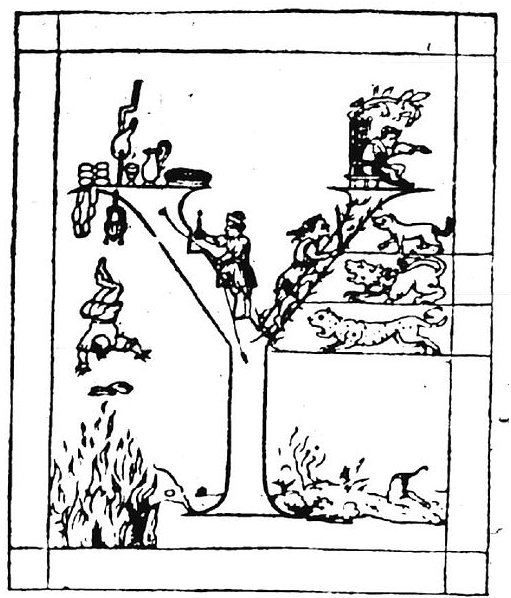
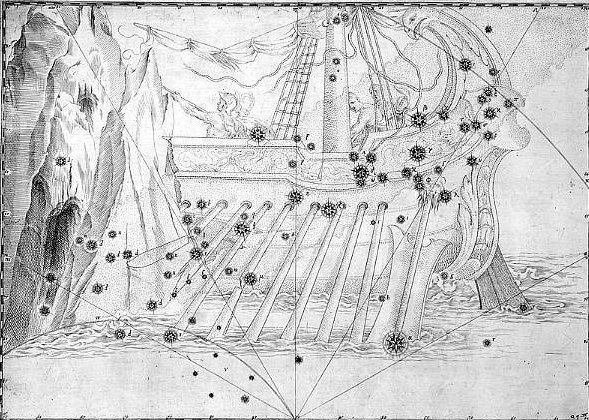 |
|
Aug 10 |
11 |
12 |
13 (*145) |
14 |
15 (227) |
|
°Aug 6 |
7 |
8 (220) |
9 |
10 |
11 (*143) |
|
'July 14 |
15 |
16 |
17 (*118) |
18 |
19 (200) |
|
SIRIUS |
"July 1 |
2 |
3 (*104) |
4 (185) |
Te
Anakena 5 |
|
At the time of rongorongo
Sirius stood like a pillar at day zero in
June 30, 181 (*101), and 101 days later came
Spica in October 9, 282 (*202). The flag of
Brazil has uplifted Spica with a little dot
far down marking Dramasa (σ
Octantis, the South Pole star). In between
we can perceive the Southern Cross, and
between Spica and the Southern Cross is the
Tail of the Hydra (γ
Hydrae, Al Dhanab al Shuja) - in the
day before Spica but below the curved band.
To the right is the Scorpion with Antares
placed at the opposite side compared to
Procyon (α Canis
Minoris), below O in ORDEM. Alphard (α
Hydrae) is below M. Sirius and 4 more stars
in Canis Major are noted below Alphard,
together with Canopus. In addition to 8
stars in the Scorpion we can also see 3 more
stars to the left which mark the Southern
Triangle (Triangulum Australe).
Altogether there are 26 + 1 = 27 stars:

... They stayed (there longer). On the fifth
day of the month of July (Anakena)
[day 186 + 41 = 227], they all got up, went
downhill, went on, and reached Hanga Te
Pau. They took their provisions with
them, carrying them on their shoulders, went
on, and reached Te Pou. They made
camp and slept in Te Pou on the tenth
of the month of July (Anakena). Then
they all got up, carried their provision on
their shoulders, went straight ahead, and
followed the path of the dream soul of
Hau Maka. They came to Hua Reva
and said, This is Hua Reva A Hau Maka!... |
 |
 |
 |
 |
 |
 |
|
Ga3-19 |
Ga3-20 (79) |
Ga3-21 |
Ga3-22 |
Ga3-23 |
Ga3-24 |
Beyond Sirius and Alkes in JUNE 30 was Oromanga,
the residence of the King:
... The name of the residence (maara noho) of
the king, of Hotu, was Oromanga. The name of the
place where the roof of the house had been covered
[hidden, kona] by Nuku Kehu was Hare Topa
(sic!) Tuu. [E:91]
... After all the food supplies had been brought on
land [i oti era te kai te too mai ki uta],
the two rulers [te ariki arurua], the king
and the queen said, 'Drag the canoes on land and
take them apart (so the wood can be used) to build
houses and cover the roofs!' They dragged the two
canoes on land and took them apart. After they had
finished disassembling the canoes, Nuku covered all
the houses [E:84]
|
45 days (= 320 / 8 + 5) |
|
7 days |
5 days |
1 day |
40 - 13 = 27 days |
5 days |
| JUNE 18 (169) |
6 |
JUNE 25 (176) |
4 |
JUNE 30 (181) |
JULY 1 (182) |
25 |
JULY 26 (208) |
JULY 27 (209) |
4 |
|
"July 11 (192) |
"July 18 (199) |
"July 23 (204) |
"July 24 (205) |
"Aug 19 (231) |
"Aug 20 (232) |
|
Te Anakena 11 |
Te Anakena 18 |
Te Anakena 23 |
Te Anakena 24 |
Hora Iti 19 |
Hora Iti 20 |
|
Hanga Takaure |
Hanga Hoonu |
Rangi Meamea |
OROMANGA |
Papa O Pea |
| Ga4-6 (89) - (95) |
Ga4-13 (96) - (100) |
Ga4-18 (88 + 13) |
Ga4-19 (102) - (128) |
(129) - (133) |
JULY 1 (182) - (91 - 84) = 175 (ST JOHN'S DAY).
Topa. 1. To bend down, to drop to the ground; to fall on a certain date. 2. To stop doing something, to drop; ina ekó topa taau aga, do not stop, keep doing your work. 3. To remain, to be left over, to be unfinished; he topa te kai, the food is not finished, there is some left. 4. To come to one's memory; i te aamu he topa te vānaga tūai, in the legends old words come to memory. 5. To remember, to reflect (with mana'u as subject); e-topa rivariva tokorua mana'u ki te me'e nei, let the two of you think carefully about this thing. Vanaga. 1. Wine; topa tahaga, id. 2. To fall in drops, to descend, to go down, to abdicate; topa iho, to fall; hakatopa, to knock down, to cause to fall; hakatopa ki raro, to knock down, to subjugate. 3. Childbirth, abortion; topa te poki, to lie in. 4. A feast, to feast. 5. To arrive, to result; topa rae, newcome; topa iho, to come unexpectedly; topa ke, to deviate; topa no mai, topa hakanaa, topa tahaga, mau topa pu, unexpected; topa okotahi, solitary; hakatotopa, to excite, to foment. 6. Bad, low, cheap, failure; igoa topa, nickname; ariga topa, sinister, sly, ill-tempered, to hang the head; hakatopa, to disparage; hakatotopa, irresolute. 7. (Of upward movement) topa ki raro, to scale, to surpass; hakatopa ki te ao, to confer a dignity; hakatopa ki te kahu, to spread a sail; hakatotopa, to make a genealogy. Churchill.

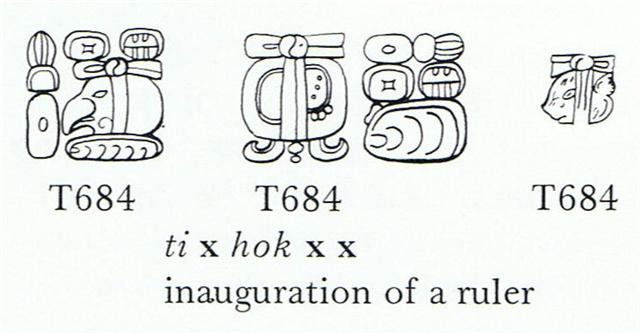
(68 * 4 = 272 = 2 * 136)
|























